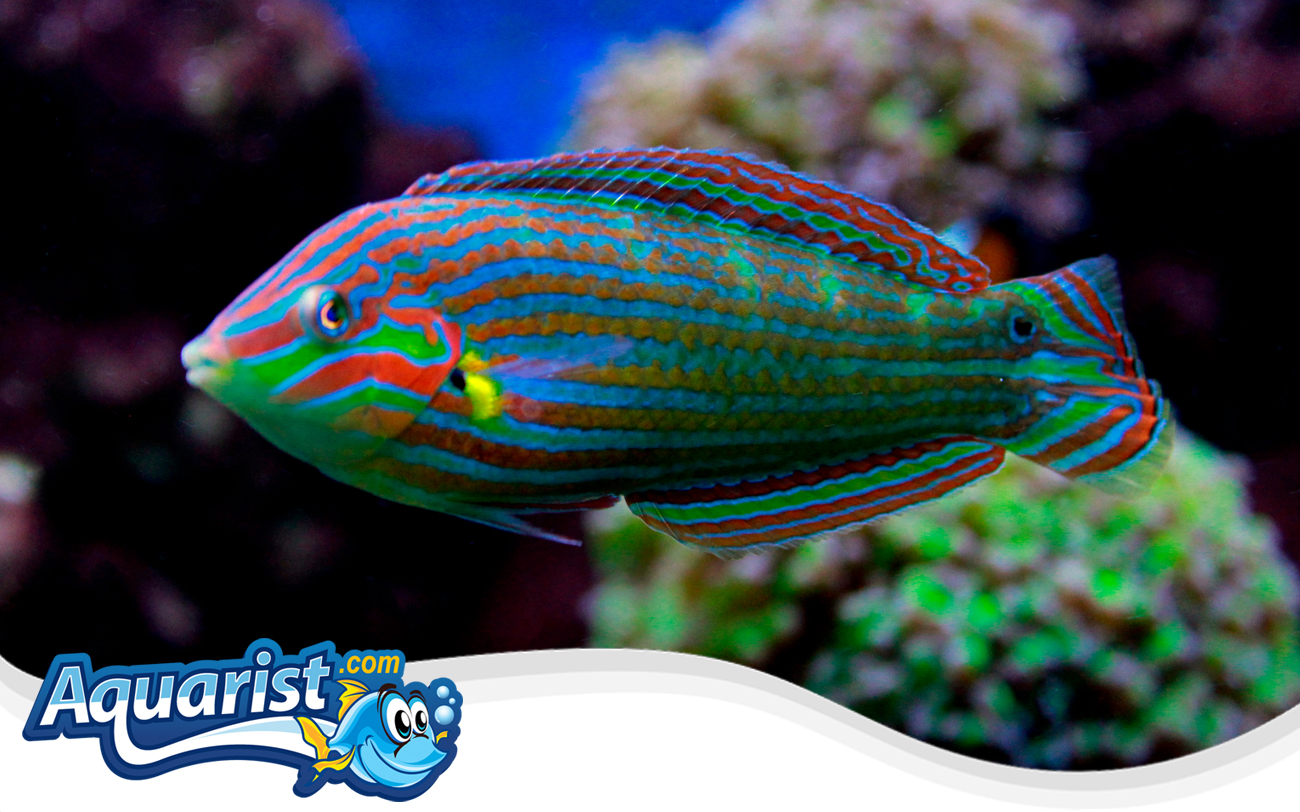Overview
- Native to the Indo-Pacific, commonly found in coral reefs, lagoons, and seagrass beds.
- Recognized for its vibrant green and blue body with striking orange and yellow patterns.
- A highly active swimmer, frequently seen darting through rock formations and sandy bottoms.
- Juveniles display more subdued coloration, which intensifies as they mature.
- Popular in reef aquariums due to its pest control abilities, including eating bristle worms and flatworms.
Feeding
- Carnivorous diet, primarily feeding on small crustaceans, copepods, and polychaete worms.
- Readily consumes frozen and live foods such as mysis shrimp, brine shrimp, and chopped seafood.
- Can be trained to eat high-quality marine pellets and flake foods.
- Requires multiple small meals throughout the day to maintain energy levels.
- Enjoys foraging in the sandbed for hidden prey, mimicking natural hunting behavior.
Habitat
- Typically found in shallow reefs and sandy coastal areas.
- Requires an aquarium with open swimming space and a fine sand substrate for burrowing.
- Best kept in tanks with live rock formations to provide shelter and hunting grounds.
- Moderate to strong water flow is recommended to replicate natural reef conditions.
- A minimum tank size of 75 gallons is recommended due to its active nature.
Fish Care
- Optimal water temperature: 74-80°F (23-27°C).
- Ideal pH range: 8.1-8.4, with a specific gravity of 1.023-1.026.
- Requires stable water conditions and consistent tank maintenance.
- Can be sensitive to sudden fluctuations in salinity or temperature.
- Regular sandbed maintenance is crucial, as it burrows at night for protection.
Compatibility
- Generally peaceful but may become territorial towards other wrasses of similar size.
- Compatible with other peaceful reef fish such as tangs, gobies, and clownfish.
- Should not be housed with highly aggressive species that may intimidate it.
- Reef-safe with corals but may consume small ornamental shrimp and snails.
- Does well in a community setting but thrives best when given adequate space.
Aquarium Behavior
- Highly active swimmer, frequently exploring every part of the aquarium.
- Often seen picking at live rock and sand for small invertebrates.
- Burrows in the sand at night for protection, emerging in the morning.
- Displays curiosity towards new tank additions and environmental changes.
- Thrives in a tank that replicates its natural reef environment with ample space and hiding spots.


